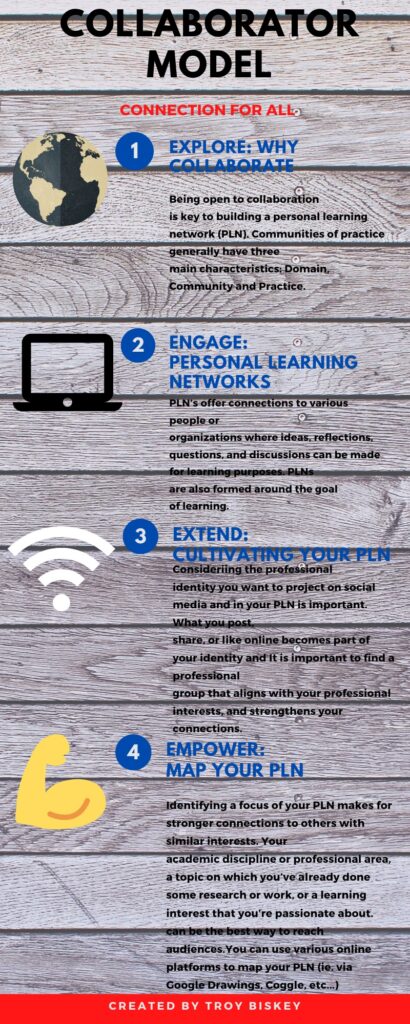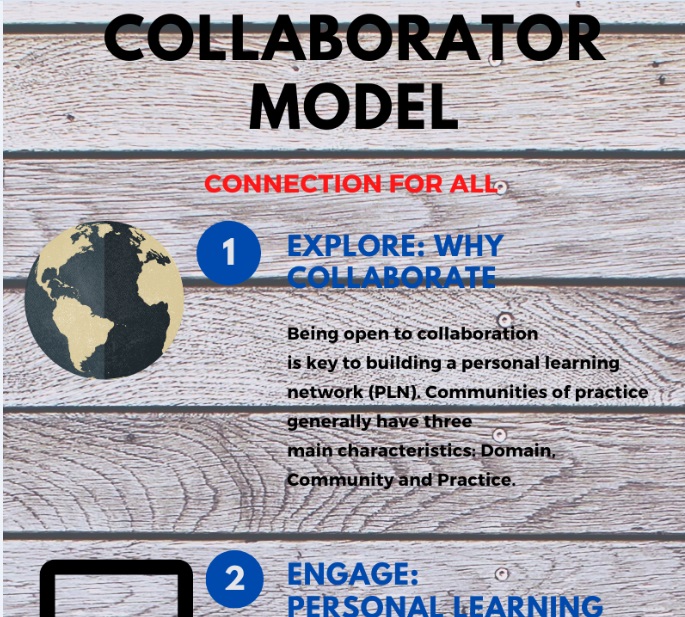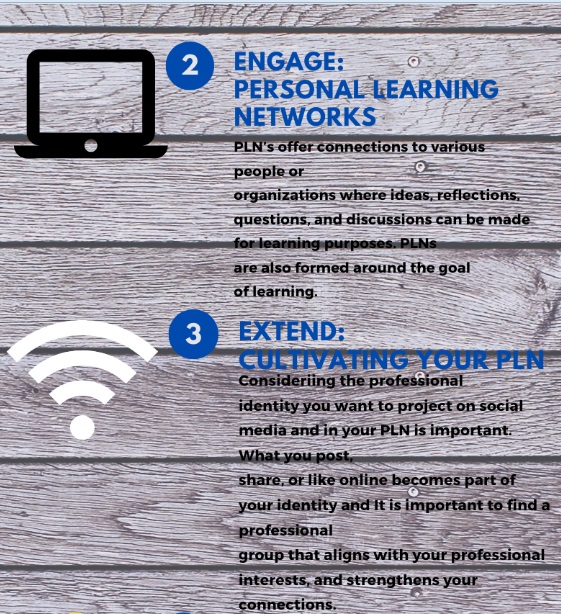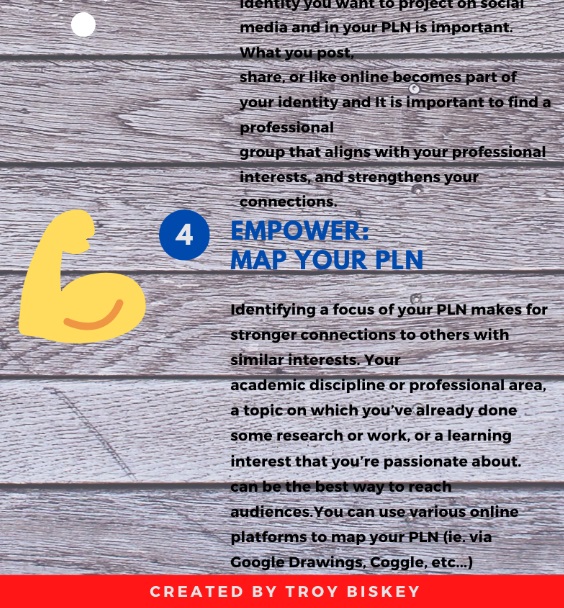In baseball, there is a mandatory rule, three strikes and you’re out; but three lucky strikes…. and you’re in. Right now you’re probably thinking “What does this have to do with collaboration?”, and the (obvious) logical explanation for that would be, I don’t know. Although I will tell you something I do know, and that is collaboration in the form of Personal Learning Networks (PLNs) are beneficial for your pedagogical practice. Now you’re probably thinking “How? What’s he talking about?”, well I’ll tell you all about it in the rest of this blog so bear with me. Get strapped on in, open your mind, hang loose, and let’s get ready to grind.

The first thing you need to know is that PLN’s offer connections to various people or organizations where ideas, reflections, questions, and discussions can be made for learning purposes. While PLNs are not new, the platforms they are built on today have changed. Many teachers use social media to create their personalized, digital PLN. It is also important to keep in mind that there are four elements when it comes to creating a PLN which include: Exploring, Engaging, Exploring and Empowering. Let’s learn more about these steps, shall we?

As a teacher candidate myself, I believe that outsourcing and researching topics to build my pedagogical practice is an excellent way to improve my own knowledge. I find that collaboration in terms of learning is a great way to improve knowledge, as well as having opportunities to teach others. Being open to collaboration is key to building a personal learning network (PLN), the aim is to broaden your network to include cross-disciplinary skills and insights. These online communities of practice generally have three main characteristics: 1. Domain: shared knowledge and skill within a focused area, 2. Community: individuals converging and learning together, 3. Practice: sharing strategies, tools, resources, and examples through a knowledge exchange. One of the absolute coolest things about PLN’s is that they can be more personal, built entirely by you. How wild is that? Pretty sick I would say. I hope I’m selling you on collaboration so far… STEP 2!

The next steps here are ENGAGE and EXTEND, the goals of which are to have others connect to you and you with them in order to share some new information with others, as well as getting your name out to the public. For me, I’ve found that I am interested in learning other people’s interests, especially when they have a passion for their teaching. With PLN’s you are able to control who sees your work, you can share your work in whatever way you choose to do so, and you have the option to observe other people’s work without having to comment. PLNs are also formed around the goal of learning. These modes of learning can be organized professionally or through personal interest, the overall goal of a PLN, however, is to help people learn about particular topics/subject areas. I’ll answer your burning question right now, I know you’re wondering “But does my PLN have to be professional?”. ABSOLUTELY NOT, you can construct it with your own interests to teach others about your hobbies and such. Incredible… just incredible. The overall goal of PLNs is to promote growth, development, and understanding in an area that is meaningful to you. The overarching theme of PLNs is that of Connectivism which is the theory that your network provides the context for your learning, not necessarily the content. Keepin’ up alright? Good, movin’ on.

My God, we’ve reached it, the final step. Are you excited? You should be because I am. I can’t believe we made it this far together. Anyways the fourth thing to keep in mind is to Empower your PLN, you want to map it out strategically to the public. I will mention that your PLN can be in the form of various online platforms that are quite fun to use, some of which include: Twitter, YouTube, Google Drawing, Coggle, and The Educator’s PLN. Creating a visual diagram of the people, organizations, collectives, and others who are in your network makes for a strong looking PLN as well as an effective one. Again as a teacher candidate, I find that having these online platforms as an outlet to express my passion in a specific subject area of interest gets me excited to teach others, and hopefully, I can learn a thing or two from their PLN. It is also important to make note that a clean looking, well-organized PLN that highlights your specific nodes, targeted demographics, technologies you have used/don’t use, partners, etc.., will ensure for connection between various individuals and organizations you are trying to reach.

Well, that brings us to the end of the discussion on PLNs and how you can use them in your pedagogical practice. The possibilities for connection and collaboration with the use of PLNs are endless, and it is an excellent way to improve your learning. If I have taught you NOTHING from this entire post, then I will leave you with this… always let your steak rest at least 10 minutes after cooking and cut it against the grain. I’m glad we went on this journey together, I feel like we’ve grown.
Take an escalator down to the ole comment section, go down to the basement, leave your grievances, let me know what you’ve learned. Have an amazing day, don’t let your dreams be dreams, make a PLN, and most importantly, have a good one. Cheers!
